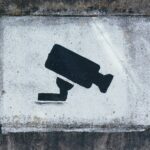The Federal Reserve Bank: Setting Prices is So Soviet
Even in this epoch of electronic mail, the University of North Carolina Economics Department periodically sends out an actual paper newsletter in the mail. As an exceptionally indistinguished graduate of the program, I even get one.
While perusing the most recent edition of “Economics at Carolina,” I learned about something called “The College Fed Challenge:”
“The Fed Challenge, which aims to help students become more knowledgeable about decision making of the Federal Reserve, allows students to make policy recommendations by modeling the Federal Open Market Committee.”
“To learn more,” the newsletter says, “visit https://fedchallenge.web.unc.edu/.”
So I did.
From there I learned:
“The College Fed Challenge has been introduced to help students become more knowledgeable about the Fed and the decision making process used by the Federal Open Market Committee (FOMC), the Federal Reserve System’s monetary-policy setting body . . .. The teams then make presentations based upon their research and analysis and make interest rate recommendations before a panel of judges.”
So it is almost like a spelling bee for econ nerds but there are no correct answers, only arguments. Which makes it more akin to a moot court competition for prospective central planners instead of prospective lawyers.
A Market Committee?
There is nothing more oxymoronic than the notion of a “market committee.” The Fed’s own website declares its purpose is “to influence the availability and cost of money and credit to help promote national economic goals.” One might think an allegedly free market country like ours would have advanced beyond the notion of a politburo-like committee setting prices and manipulating the supply of money. But no, that is the exact purpose of The Fed.
The Soviet Union could not accurately set the price of bread or toilet paper, yet we think we can do the same thing, but with something far more complicated; money. Why we still persist in the myth that “experts” can set such a price at an optimal level is outrageous l. No such master-economist exists, much less an entire committee of them.
The father of Keynesian economics, John Maynard Keynes, indirectly acknowledged the difficulty of being a “master-economist:”
The master-economist must possess a rare combination of gifts …. He must be mathematician, historian, statesman, philosopher—in some degree. He must understand symbols and speak in words. He must contemplate the particular, in terms of the general, and touch abstract and concrete in the same flight of thought. He must study the present in the light of the past for the purposes of the future. No part of man’s nature or his institutions must be entirely outside his regard. He must be purposeful and disinterested in a simultaneous mood, as aloof and incorruptible as an artist, yet sometimes as near to earth as a politician.
It sounds as if Keynes might have been trying to impress a date by describing how hard his job as a “master-economist” was, but, somehow, he was able to manage it.
Except no one can manage that order. Not Keynes, not his intellectual heir Paul Krugman, not any of the 11 members of the Federal Open Market Committee. “Open Markets” are not created by committee. They are created when individuals (and other entities) are allowed to voluntarily agree on a price, even the price of money.
Econ Wizards
The reason universities teach Keynesian economics, award doctorate degrees and send teams to the College Fed Challenge is that the economic bureaucracy is based on the false conceit that experts can do things like set interest rates to the optimal level. It is akin to becoming a Jedi. It takes years and years of intense training and learning to master the skill and become a Jedi – A Space Wizard. Not just anyone can wield a lightsaber effectively. Likewise, the central planners cultivate a myth that it takes years and years to become an Econ Wizard and effectively wield economic policy. Mastering the Force is just not that simple.
Except, of course, there is no Jedi Force equivalent for centrally planning an economy. The only economic force is Adam Smith’s invisible hand. The “invisible hand” is a much mocked concept by central planners because those holding economic doctorates have a financial interest in maintaining their power and influence. If optimal prices can be set by laissez faire forces (and they can), there is no need for Econ Wizards to get paid a nice salary to do it. Free markets preclude the necessity of Econ Wizards setting prices and planning the economy.
The best economists, the actual “master-economists,” understand this. Nobel Prize winning economist Freidrich von Hayek, for example, summed it up when he said “The curious task of economics is to demonstrate to men how little they really know about what they imagine they can design.” The Fed consists of people who think they know the unknowable.
So, back to the College Fed Challenge. How should my fellow Tar Heel economists approach the competition? They should send a solitary member up to the lectern, who then coolly takes a sip of water, calmly looks at the judges and says, simply, clearly and emphatically “End The Fed” and then confidently walks back to his seat and sits down.




